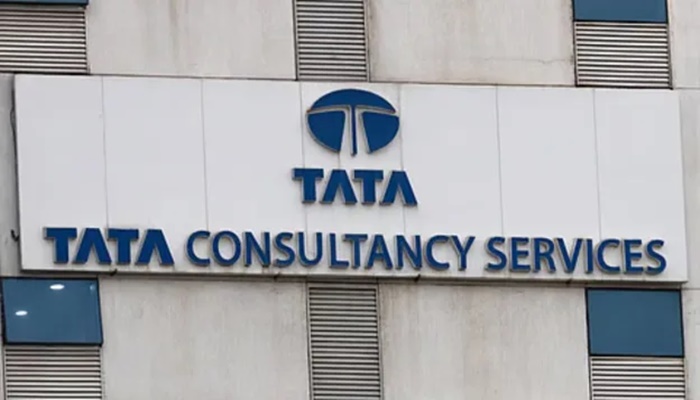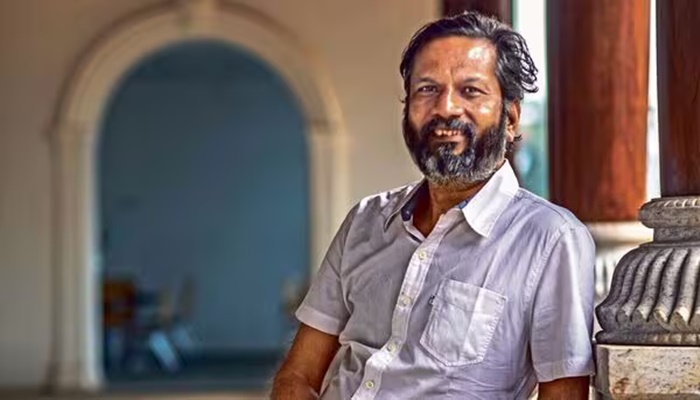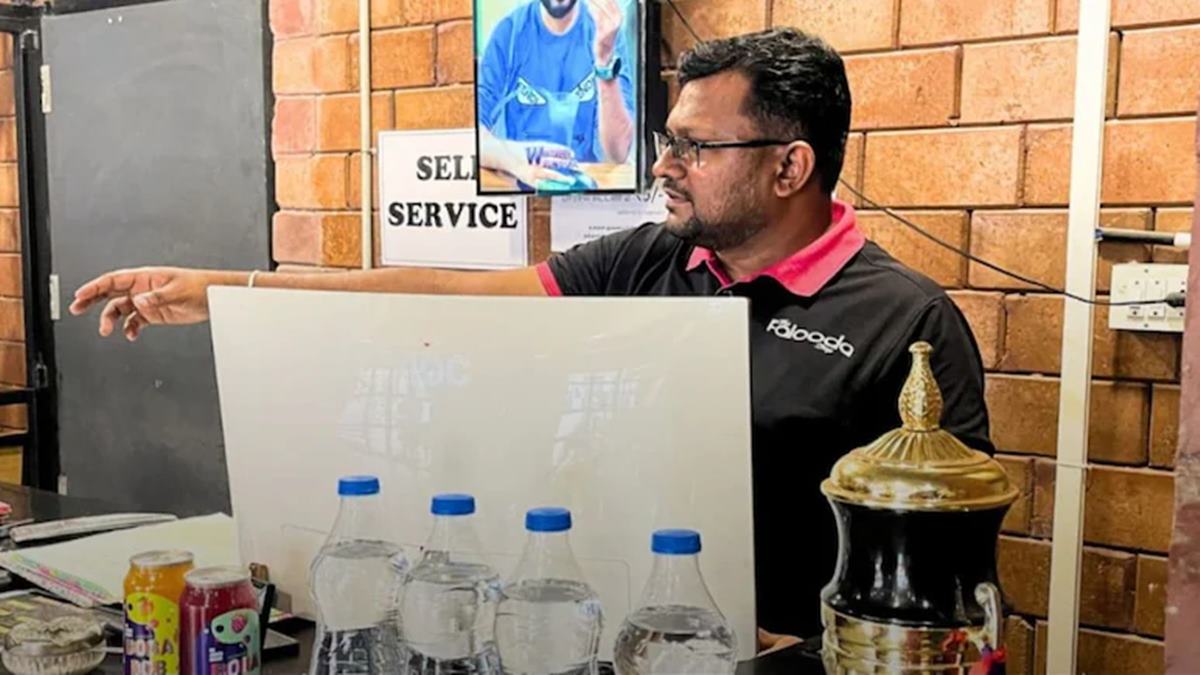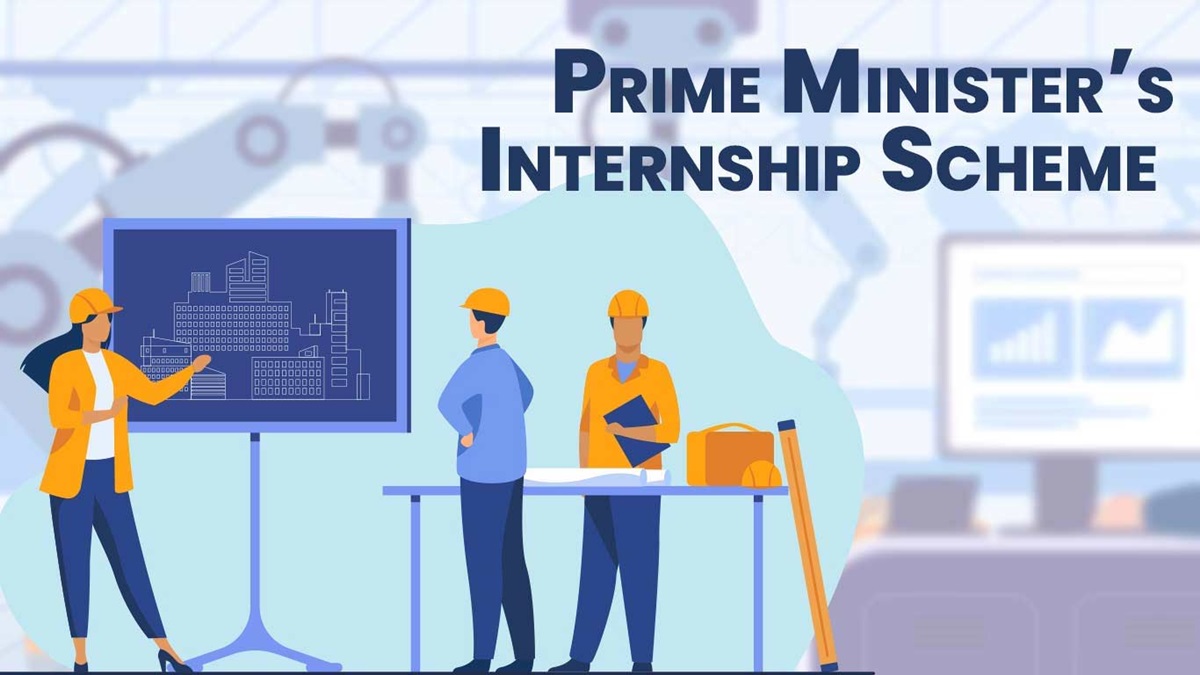Sometime around September 2024, Santosh Kumar’s parents heard on the radio about the newly launched Prime Minister’s Internship Scheme. They told their son, an engineering graduate, about it.
Kumar’s father is a farmer and his mother, a homemaker. They live in a small village in Maharashtra’s Osmanabad district. They had worked hard to put their children, a son and a daughter, through engineering college. While their daughter managed to find a job, their son, who graduated with a BTech degree in computer science in 2023, did not hear back from any of the companies to which he had applied.
The couple thought the internship scheme might offer their son an opportunity to land a job. So, they urged him to apply.
When he applied in October, he found the process was “very simple”. He had to supply information about his education and his skills, and from a list of job profiles, choose five that he thought would suit him. “However, they didn’t provide any information about the companies that were offering the jobs, so I just picked at random,” he said.
He received a positive response within a few days of applying, and was asked to appear for an interview. Within seven days of the interview, Kumar received an internship offer letter from one of the country’s top tech companies.
The family was overjoyed. Kumar, however, was apprehensive. The monthly stipend for the programme was just Rs 5,000, apart from a one-time payment of Rs 6,000 he would receive on joining. Nevertheless, he took up the offer and was posted to an office in Pune, around 300 km from his home.
Now, nine months into his internship, Kumar fears that it could be a waste of both his time and his money. (He and other interns Scroll spoke to for this story are identified by pseudonyms to protect them from any backlash from the companies they work for.)
Kumar stays in a paying-guest facility, whose monthly rent of Rs 6,000 is itself more than his stipend. He also has various other expenses. “I can’t do anything with Rs 5,000,” he said. “I have to travel about 5 km to the office. I take the bus or an auto to work. So, I have to spend on transport.”
Food is another major expense. “The rent money doesn’t include the food bill at the paying guest accommodation,” he said.
He also has to pay for his meals at the office canteen – it “costs about 60 to 70 rupees, which is a big expense for me”, he explained. To save money, “Sometimes I pack some extra breakfast for lunch,” he said.
Apart from these costs, “I need to spend on my phone recharges and other miscellaneous expenses that arise now and then,” Kumar said.
Kumar’s monthly expenses amount to around Rs 13,000 – in effect, he is paying Rs 8,000 out of his pocket to participate in the internship scheme. “It is a real struggle,” he said. “For somebody like me who comes from a poor background, this is a huge expense to incur.”
Kumar is only able to manage because his family sends him money. “I know it is very difficult for them to provide me with so much money every month,” he said.
His parents are supporting him in the hope that he will secure a job at the company at the end of his internship. “They think that it is okay to make this investment now because I’ll get a job,” he said.
But the internship programme does not guarantee jobs. In fact, Nirmala Sitharaman, who is the finance minister and corporate affairs minister, stated earlier this year in the Rajya Sabha that “The intent of the program is not to provide jobs, but to offer exposure and create awareness about market opportunities, so that candidates can be trained accordingly.”
The question of employment is what most frustrates and terrifies Kumar. “I’m scared that after 12 months, all this would have been a waste,” Kumar said. “An entire year of my life and so much money.
India faces a stark problem of unemployment among its youth, particularly pronounced among educated youth. According to a 2024 report, in 2022, the unemployment rate among those who had completed their education up to at least the secondary level was 18.4%, while among graduates, the rate was a stark 29.1%. These rates were around six and nine times higher, respectively, than the rate among those who could not read or write.
The Prime Minister’s Internship Scheme, which Sitharaman introduced in the July 2024 budget session of the parliament, represented a major effort by the government to tackle this crisis. The scheme was launched under the corporate affairs ministry with the goal of making youth “more employable” by industries in the country.
The scheme aimed to provide internships to one crore young people in “the top 500 companies” in India over the following five years. These companies encompass a wide range, from those in the automobile sector, to those in travel and hospitality, as well as in banking, finance, sales, marketing and other sectors.
The internships, which last 12 months, are open to those between the ages of 21 and 24 who have at least cleared their Class 10 exams. Candidates cannot be enrolled in a full-time academic programme or have a full-time job, and must not have an annual family income that exceeds Rs 8 lakh. Candidates who have degrees from certain institutions like National Law Universities and Indian Institutes of Technology, or have advanced degrees, are ineligible to apply.
Of the interns’ stipend of Rs 5,000, the government pays Rs 4,500, and companies pay Rs 500.
In the first phase of the scheme’s pilot phase, which began in October 2024, 280 companies from around 745 districts advertised more than 1.27 lakh internships. In the second, which began in January 2025, around 327 companies advertised more than 1.18 lakh internships, which included some internships that had not been filled in the previous round.
The website and social media accounts of the corporate affairs ministry carries pictures and videos of the smiling faces of interns who have passed through the programme. In short videos, some speak of the benefits of the internship and how thankful they are to the government for providing them with the opportunity.
But data on the response to the scheme shows a less rosy picture. In the first round, though 1.81 lakh individuals applied for the 1.27 lakh internships advertised, only 60,000 received offers, indicating that the companies rejected many as unsuitable. Worse, of the 60,000 who had offers, only 8,700 joined their internships. The second round saw 2.14 lakh applicants, of which 72,000 received offers – but only a little under 23,000 accepted them.
Activists and experts from the field of youth empowerment and employment say a combination of factors is responsible for the poor response to the scheme.
Chief among these is that the scheme is aimed at individuals in an age group in which they would be seeking jobs, but offers them only internships.
“If somebody is looking for a job, then they’re looking for a job, right?” said Byomkesh Mishra, co-founder of Medha, an organisation that works on youth employment. “Internships may help them learn some of the skills and maybe improve their prospects of employment further, but it cannot itself be a proxy for a job.”
He argued that ideally, internships “should be embedded in education”. Such programmes “have the best impact when they happen while the student or the candidate is still learning or still in the education system. The concept is called work-based learning,” he noted.
But this was not the only problem with the scheme. Job-seekers who were interested in enrolling in the scheme found that most of the internships on offer were concentrated in certain parts of the country, making them difficult for many from other regions to access.
In the second phase, for instance, companies in Tamil Nadu and Maharashtra offered more than 15,000 internships each, while companies in Gujarat offered around 11,000 internships and those in Karnataka offered close to 10,000. The total of more than 50,000 internships in these states represented just under half of the total number on offer in that phase.
But apart from Maharashtra, all these states currently have less than 300 interns enrolled in the scheme. Instead, the five states where the most number of interns enrolled are Assam, with 1,408 interns, Uttar Pradesh, with 1,067, Bihar, with 634, Odisha, with 420, and Kerala, with 516.
Tanoj Meshram, a public policy researcher and professor at the SP Jain Institute of Management and Research, argued that these numbers suggested that “since the stipends are so low, candidates who mostly have no other options might have taken up the internships.” He added, “It could be that candidates in Assam were most in need of jobs, and so they took up the offers.”
Aamir Nurule, who works with an organisation that holds job fairs and aids students in recruitment, noted that the National Apprenticeship Promotion Scheme, which provides year-long apprenticeships to young people, pays them stipends ranging between Rs 6,000 and Rs 10,000. “The reimbursement is higher than the PM Internship Scheme,” he said. “Why would students opt for the internship scheme then?”
Scroll emailed the corporate affairs ministry, seeking responses to criticisms about the scheme – this story will be updated if any responses are received.
Like Kumar, Praveen Arun is also struggling to meet his expenses after enrolling in the internship programme, with a company in Chandigarh. Arun, who belongs to a family of farmers from a small town in Bihar, graduated from a college in Punjab this year with an engineering degree, and was disappointed with how placements were conducted in his college. Most of the companies that visited were hiring for sales positions, he noted, and not for engineering ones.
Staff at his college suggested that he apply to the prime minister’s internship scheme. “I had never heard about it until the staff mentioned it to me,” he said. “I wasn’t even asked to fill in the application, the college did it for me. They asked for some documents and asked me to choose three companies I would like to join.”
When he was selected and appeared for the interview, Arun sought to understand from his interviewers what benefit he would gain by taking up this internship, and particularly if it would eventually lead to a job. “They told me that the government had only directed them to provide internships so far,” Arun said. “And so until the government gave them any further instructions, they would not be able to assure me of a job.”
Though he was disappointed, he recounted, “An internship seemed like a better option than sitting at home.”
Arun was offered an internship in Bengaluru, which he would have accepted had he been able to afford the expenses. “Bengaluru is the IT hub. The exposure would have been very good for me,” he said. “But it would have been too expensive for me to move there for a year.”
Instead, he took up the offer in Chandigarh. “But in Chandigarh, only one such software company exists,” he said. Since he had completed his engineering degree in Punjab, he was familiar with the city and more confident of navigating its challenges.
But even Chandigarh is proving expensive – Arun spends between Rs 15,000 and Rs 17,000 each month.
“Since Chandigarh doesn’t have too many industries, there weren’t any paying guest accommodations that exist in the city and most were already full. So I had to rent out a room,” he said.
Like Kumar, for the bulk of his expenses, Arun depends on his family. “It is difficult for them to arrange the money for me every month,” he said.
Sayyed Etemaad, a 21-year-old pharmacy student, faced the same problem. Etemaad, a resident of Amravati, applied and was selected under the scheme, but realised that the centre nearest to him was Aurangabad, 300 km away. “The travel, accommodation and food would cost me way more than the internship money,” he told Scroll. “I did not take up any offers.”
His friend and fellow pharmacy student, Kamran Ahmad, also decided against applying. “The starting package for a fresh graduate of pharmacy is Rs 4 lakh per annum,” Ahmad said. “But the internship paid almost nothing.”
The low stipend is not the only problem that interns struggle with. Kumar explained that he also feels that his time at the company is not well utilised.
He is required to be in his office by 10 am. Though his internship is supposed to be in the field of software development, he is usually not given any project to work on.
Instead, he sits at the desk allocated to him, sets his laptop on it and does “self study”, he said.
“On some days, my mentor will check in and find out how my skill development is going,” he added. “But he does not give me any work to do.”
Thus, on most days, he spends his hours in the office preparing for future job interviews. At 5 pm, he leaves and returns to his place of accommodation.
Some of his peers have had better luck, he noted. “Some of my friends have different mentors, who give them software development work,” he said. “So, whether or not you get work also depends on whose care you are under.”
But those who take up internships through other avenues have a uniformly better experience, he explained. “Those who come from big institutions like the IITs or other big colleges are given a lot of work to do all day,” Kumar said.
Other interns also receive significantly more pay. Kumar noted that in his company, some interns who were still undergraduate students were paid stipends of between Rs 12,000 and Rs 15,000, up to three times more than interns in the government scheme. Meanwhile, interns from IITs are given a much higher stipend, he said.
“It is very discriminatory in the way that they treat the interns who come in through the scheme, and other interns,” he added.
In fact, in Arun’s company, the programme for interns who enroll through the government scheme was structured in such a way as to separate them from other interns.
Most other interns, he noted, were sent to a main internship centre in South India. Those that entered through the government scheme, however, were allocated to centres in other cities, including Chandigarh, where only they worked. “It is only the PMIS interns who are distributed in other branches of the company,” he said. “Because there are hundreds of us that have come in through the scheme, we were told that they would not have been able to accommodate all of us at the internship centre.”
The interns Scroll spoke to were also largely disappointed with the training they have received so far at these centres. “The company conducted training for us only for seven days,” Kumar said.
He noted that the training was “very basic, just an introduction to the subject” – the kind that could be easily gained through online programmes. In contrast, new employees at the company undergo a more intensive three-month training, he explained.
Raj’s experience was similar. “Maybe people who come from other streams, these sessions will be helpful,” he said. “But for somebody who is coming from a software background, these lessons are repetitive.” He and Kumar both also argued that 12 months was too long a duration for an internship at what is a crucial period in a young person’s life – in their view, six months would be sufficient to impart important skills to them.
Kumar rued the fact that the company gave them no information about the internship beforehand. “It would be good to know what the curriculum is for the year,” he said.
Meshram echoed this view. “When the internships were announced, the companies should have announced a series of roles for which people can apply – the roles should have very specific descriptions,” he said.
Rafique Shaikh, a recruitment agent, described the scheme as a “great platform to connect youth with big corporations”. But, he noted, applicants “can only apply in three companies which limits their options. And the job description is very basic, making it vague for a candidate.”
Meshram noted, “Candidates need to know that with the training that they are getting, they have been kind of certified for a specific job, and after completion of the internship, if not in that company, they should be able to land a job somewhere else.”
The only clear benefit that both Raj and Kumar said they had gained from their internship so far was an improvement in their communication skills. “When I initially joined the office, I was awkward and hesitant to talk to others at the office,” Kumar said. “But my communication skills have improved since I joined.”
But all three interns Scroll spoke to said that they were not particularly committed to completing their internships and would quit if they found a job or any better opportunities. “Who wants to work as an intern with a pay of Rs 5,000? The minute I find a job, I will leave,” Raj said.
Arun said that his programme requires him to be in his office between 9 am and 5 pm, leaving him little time to look for jobs. “But if I do find a job, I will leave immediately,” Arun said.
Kumar felt considerable anxiety at the fact that many of his peers who graduated with him had secured jobs with reasonable salaries. “I feel I’m stuck while they have moved on,” he said. “An internship is of low priority, it is a proper full-time job that I would have liked to have.”
But when Kumar attended one interview for a job, he was dismayed to learn that the company did not regard his internship experience as significant. “They interviewed me and asked me if I had gained any work experience,” he said. “When I told them that I was currently working at this company, they said that it would not count as experience.”
This filled him with the fear that “the entire year is going to be a complete waste for me”.
In fact, he also fears he will lose at least another six months or so afterwards, applying for jobs. “It’s extremely stressful and frustrating to think about what will happen after I finish the internship, in case I’m not offered a job at this company,” he said. “I keep asking the manager at my company if it would be possible to get a job, but he does not give me any straight answers.”
Despite the problems with the scheme, experts did not dismiss the idea of an internship scheme outright.
Priya Agrawal, the founder of the Maharashtra-based Antarang Foundation, noted that even if interns are not given very important tasks to do, young people in internships often benefited just from spending time in an office or a workplace that inspired them. “Even if they are doing mundane jobs, the fact that they are present in these spaces itself is beneficial to them,” she said.
Byomkesh Mishra of Medha concurred. “For somebody from a poor and low-income background, just getting exposure to a prestigious workplace can sometimes also add to their confidence,” he said.
Meshram, however, disagreed with this view. “After the person has done the internship, the question is what specific role did the candidate perform and what training have they received,” he said. “They will eventually be interviewed about that, right?”
Agarwal argued that the scheme would be more effective if the government opened it up to people who were 18 and above. “Lowering the age would help students get a chance to experience a workspace before they decide what jobs to pursue,” she said.
Meshram argued that since the stipend was low, and interns were not provided any accommodation, to ensure that their family life and economic circumstances were not disrupted, the government should ensure that they were posted in or close to their places of residence.
Mishra also noted that those enrolled in the scheme would benefit if the government monitored their progress. “Is anyone keeping track of what happens after the internship?” Mishra said. “The government should know what happens to candidates who complete the internship.”
While the government could not mandate that companies hire interns, Mishra said, even a simple mechanism that required them to report back to the government about the internships would be beneficial. “It would be good if the companies let the government know the progress of the interns and how many would be absorbed into the company,” Mishra said. “It would be a good sort of nudge for them to absorb some of them and then it will naturally happen.”




















